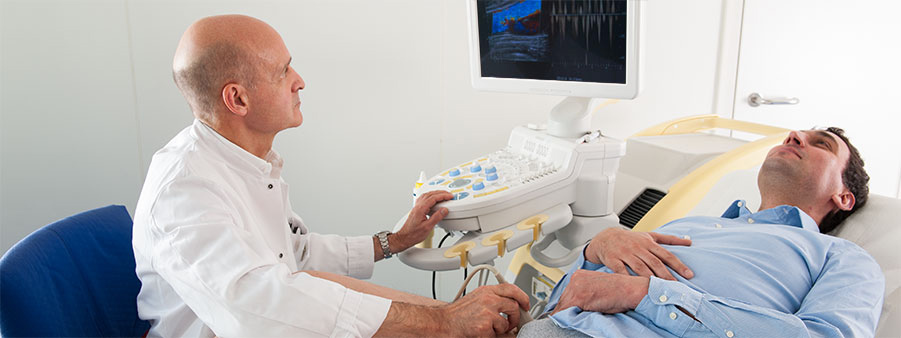THROMBOSIS
Phlebothrombosis (as well as deep or subfascial vein thrombosis) is a dangerous complication of the varicose vein illness. In some circumstances it can occur without an underlying varicosis. If untreated, thrombosis may, in the worst case, cause a pulmonary embolism.
Typical symptoms are:
- Redness
- Swelling
- Feeling of heat
- Pain
Diagnosis
For safe diagnosis, an ultrasound test (Duplex) and, where necessary, a phlebography are necessary. Once the thrombosis has been diagnosed, suitable treatment has to be initiated immediately.
Therapy – Treatment of thrombosis
- Immediate anti-coagulation (blood thinning by heparin injection) and overlapping administration of Marcumar (phenprocoumon),
- Alternatively, the immediate intake of a medicinal product for the new oral anti-coagulant NOAK (e.g. Xarelto®, Eliquis)
- Immediate compression therapy with OS compression stockings KKL.II, initially for 6 months
- Immediate mobilisation
- Regular ultrasound checks (Duplex)
Thrombophilia diagnosis
In the following cases a blood test is necessary to be able to determine a possible thrombophilia (illness of the body's own coagulation system) as a cause:
- “Unclarified” thrombosis
- Relapsed thrombosis
- Hereditary predisposition
- Thrombosis under anti-coagulation
Depending on the results of the thrombophilia diagnosis and the location/extent of the phlebothrombosis, one of the following processes is to be chosen:
- Anti-coagulation
- Compression therapy
- Regular check-ups

